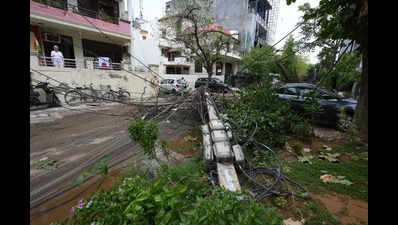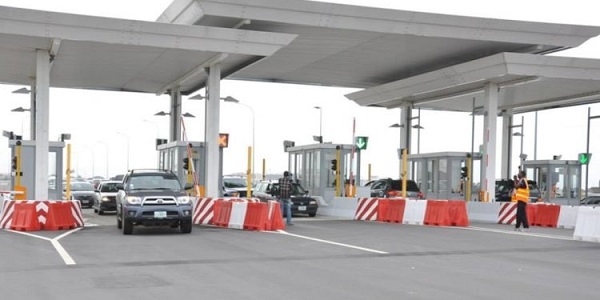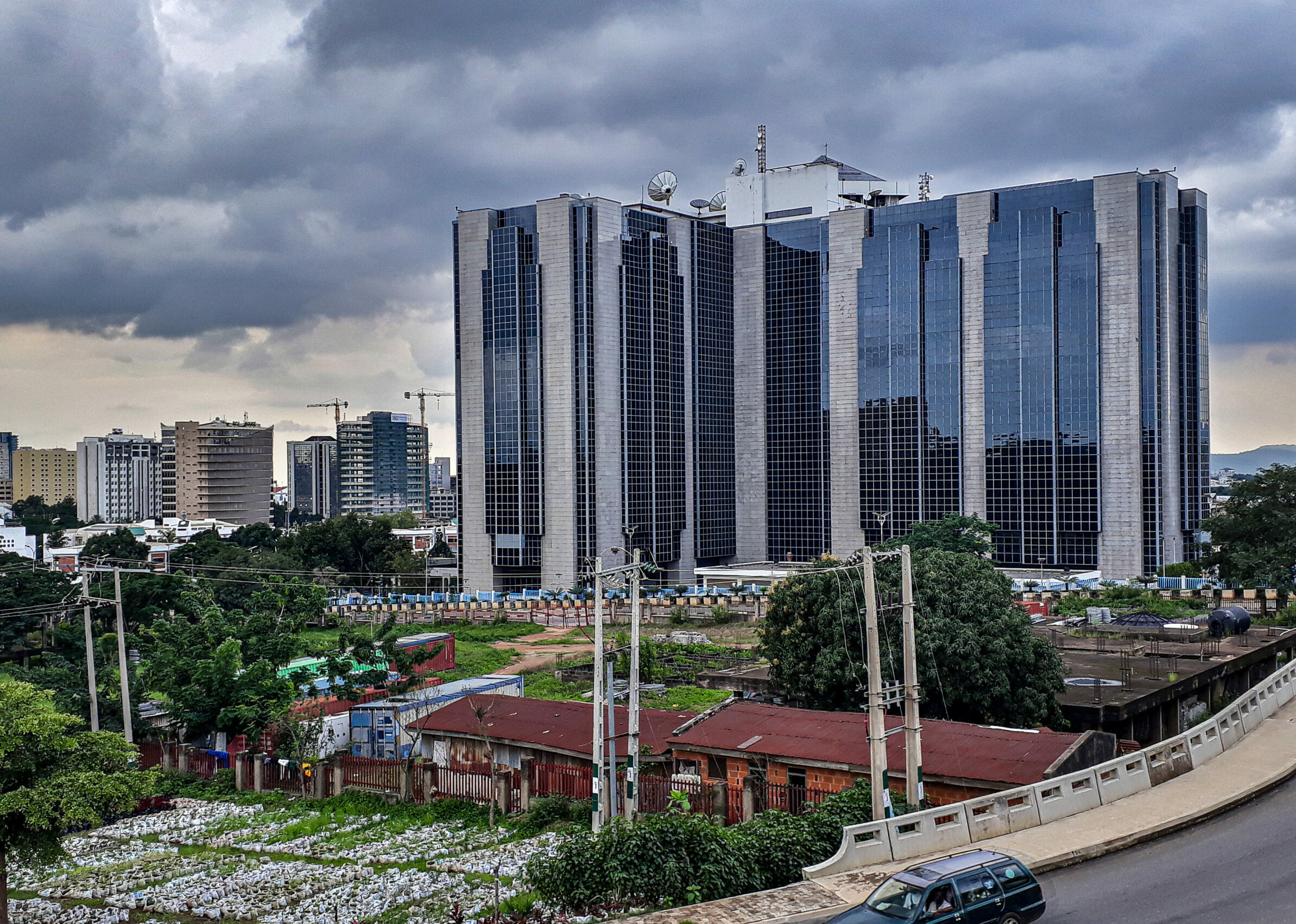4 hours of storm but 'felt like a cyclone'

Gurgaon: Another summer squall tore through the city just after midnight on Sunday, leaving in its trail streams gushing through streets, uprooted trees and electricity poles, and power outages in colonies. Among the worst hit areas were DLF-2 and Suncity, where trees had fallen with the winds, crashing onto parked cars, in the four hours that the storm lasted. "It felt like a cyclone hit us. A huge tree fell right outside our building and crushed a parked car. We were terrified," said Kanika Malhotra, who lives in DLF-2.Residential areas in Sector 23A, South City 1, Sushant Lok 1, Palam Vihar and sectors 31 and 40, were flooded with rainwater and sewage from clogged drains. "Our living room was flooded, and the main road outside was completely submerged. We couldn't step out till the water receded. There was no power all night," said Anil Kumar, a resident of Sector 4. In Sector 109, residents of ATS Tourmaline said the society had turned into an island. "We couldn't step out of our society. Water was flowing like a stream," said Amit Saxena, a resident.But MCG officials said that pre-monsoon desilting and clean-up of drains helped prevent flooding on several key stretches of the city.
Teams were deployed with pumps and other equipment to manage stormwater, ensuring that areas such as Sector 10, Sector 9A, Subhash Chowk, Hero Honda Chowk and Palam Vihar were spared from waterlogging, said Pradeep Dahiya, MCG commissioner. "Our goal is to ensure that rainwater is drained out quickly. The results from this weekend's rainfall are a testament to the hard work of our teams," said Dahiya. Residents didn't agree.
"We have been raising the issue of poor drainage for years. This time was no different. Several portions of our sector roads were waterlogged on Sunday morning. Even after months of preparation, the desilting work hasn't been completed. Rainwater gets accumulated on sector roads as it fails to flow into drains because the drains are clogged or they are not connected to the master drains. What is stopping them (MCG) from carrying out the work efficiently," questioned Bhawani Shankar Tripathi, general secretary of Sector 23A's RWA.In Suncity, the RWA took matters into its own hands."Multiple trees were uprooted in Suncity. Our team inspected the entire area and began clearing them one by one. Some cars were damaged, but thankfully no major injuries were reported," said Kusum Sharma, chairperson of Suncity RWA.According to MCG's official report, 38 trees were uprooted. Several teams worked overnight to remove the trees and other obstructions from areas such as South City 2, Sushant Lok 3, Palam Vihar, Ardee City, and sectors 4, 9, 9A, 21, 23, 31, 40, 46 and 47.
Cleanup operations were still going on in Sushant Lok 1, and sectors 55 and 56, officials said. The city's power infrastructure was damaged too.Dakshin Haryana Bijli Vitran Nigam (DHBVN) officials said supply was disrupted for hours in DLF-2, South City 1, Sector 23A, Sector 15, Palam Vihar and Sushant Lok, among other areas."Power went out around 2.30am and didn't return until after 10am. We had to rely on inverters and generators," said Jai Prakash, a resident of Sushant Lok.
"Emergency repair teams were dispatched in the early hours to restore supply, but in several areas, power was not restored until late morning," a discom official said.Though the storm caused widespread flooding, traffic snarls were largely avoided because of the timing of the downpour. Traffic police said arterial routes, including the Delhi-Gurgaon Expressway (NH-8), Dwarka Expressway, Golf Course Extension Road, and Southern Peripheral Road, were inundated.
Stretches near IFFCO Chowk, Hero Honda Chowk, Rajiv Chowk, Vatika Chowk, and Narsingpur were among affected too.On Sunday, environmentalists pointed out that trees were getting uprooted because of rampant concretisation.Vivek Kamboj, who has filed a petition before the National Green Tribunal (NGT) over this issue, said saving trees in the city was crucial. "Many trees are being weakened or damaged due to poor urban planning practices. In residential areas, footpaths are often built too close to tree trunks, and excessive concretisation around the base prevents water absorption and root expansion. Over time, this makes trees unstable and vulnerable to collapse during storms. We urgently need better enforcement of norms and more thoughtful integration of green cover into development projects," he said.







